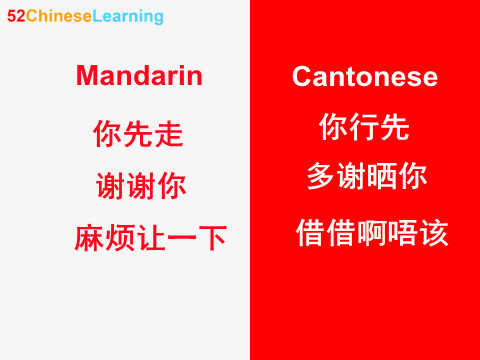Copy link succeeded! Now can share to friends.
Cantonese VS Mandarin. Cantonese is a charming language that began to emerge in ancient South Vietnam. It is quite different from Mandarin in pronunciation, intonation, and grammar. The most obvious grammatical differences between Cantonese and Putonghua are affixes, usage of quantifiers, the word order of double objects, comparative structure, and adverbial postposition. These points will also be briefly introduced below. Let everyone feel the irresistible linguistic beauty and phonological beauty of Cantonese.
1. What’s Cantonese?
Cantonese, also known as vernacular, Cantonese, Guangzhou dialect, Cantonese dialect, etc., is a kind of tonal language of the Chinese family of Sino-Tibetan language family, it is also the mother tongue of the Cantonese family of Han nationality. Cantonese has nine tones and six tones. It perfectly retains the characteristics of ancient Chinese, and it is the most complete language to retain middle Chinese.

2. The differences between Cantonese and Mandarin are as follows.
2.1 Different Syllables
Guangzhou dialect retains many ancient Chinese components Mostly of these are monosyllabic words. Conversely, Mandarin mostly maintained disyllabic words. Mandarin has the tongue sounds zh, ch, sh, R, but Cantonese does not. There are nasal finals with mending in Cantonese, and finals with b, d, and g ending (that is, entering finals), but there are no finals in Mandarin.
2.2 Different Grammars
The word order is different, Mandarin “我先上 (wǒ xiān shàng) I go first” and Cantonese “我上先 (wǒ shàng xiān) I go first”.
Function words are different, such as Mandarin “我正在读书 (wǒ zhèng zài dú shū) I am studying” and Cantonese “我读紧书 (wǒ dú jǐn shū) I am studying hard”.
2.3 Different Cultures
Putonghua is the modern standard Chinese with Beijing pronunciation as the standard pronunciation. On the other hand, the northern dialect (Mandarin) is the basic dialect and typical modern vernacular writings as the grammatical norm.
Guangdong has had its own unique culture since ancient times. At the same time, it opened to the outside world early and absorbed a large number of western cultures This made Cantonese more diversified, extensive, and in-depth.
3. What’s Mandarin?
Language is the product of the society that changed and developed with it. We know that Putonghua is an artificially prescribed language, the northern dialect is not equal to Putonghua, and Beijing dialect is not equal to Putonghua That is to say, none of the Chinese dialects equates with Putonghua.
The population in the northern dialect area is the overwhelming majority. Naturally, the northern dialect reflects Putonghua. Putonghua is a melting pot. It absorbs various dialect words to varying degrees, in addition, it also adapted many Cantonese dialects, such as “单车 (dān chē) bicycle”, “的士 (dí shì) taxi”, “沙发 (shā fā) sofa” and so on.
The tone of Putonghua is relatively simple. It only has four tones of Yin, Yang, Shang, and Qu. Conversely, the tone of Cantonese is relatively complex. It has nine tones and six tones: Yin Ping, Yin Shang, Yin De, Yang Ping, Yang Shang, Yang De, Yin In, Middle In, and Yang In. Because of the great difference between pronunciation and Putonghua, northerners who come into contact with Cantonese for the first time seem to hear foreign languages. That makes it hard for these people to have mutual communication.
According to folk rumors, when they built the People’s Republic of China, Cantonese was lost to the northern dialect. That is because Cantonese was not widely distributed in the whole country. After the founding of the People’s Republic of China, Putonghua was vigorously promoted nationwide Thus affecting the Cantonese dialect. As a result, many younger generations in the Cantonese-speaking areas of the Chinese mainland do not know the Cantonese pronunciation of some special terms.
What’s the difference between Cantonese and Mandarin? These are the main points that we want to discuss today.
Your first 1-on-1 Chinese lesson offer